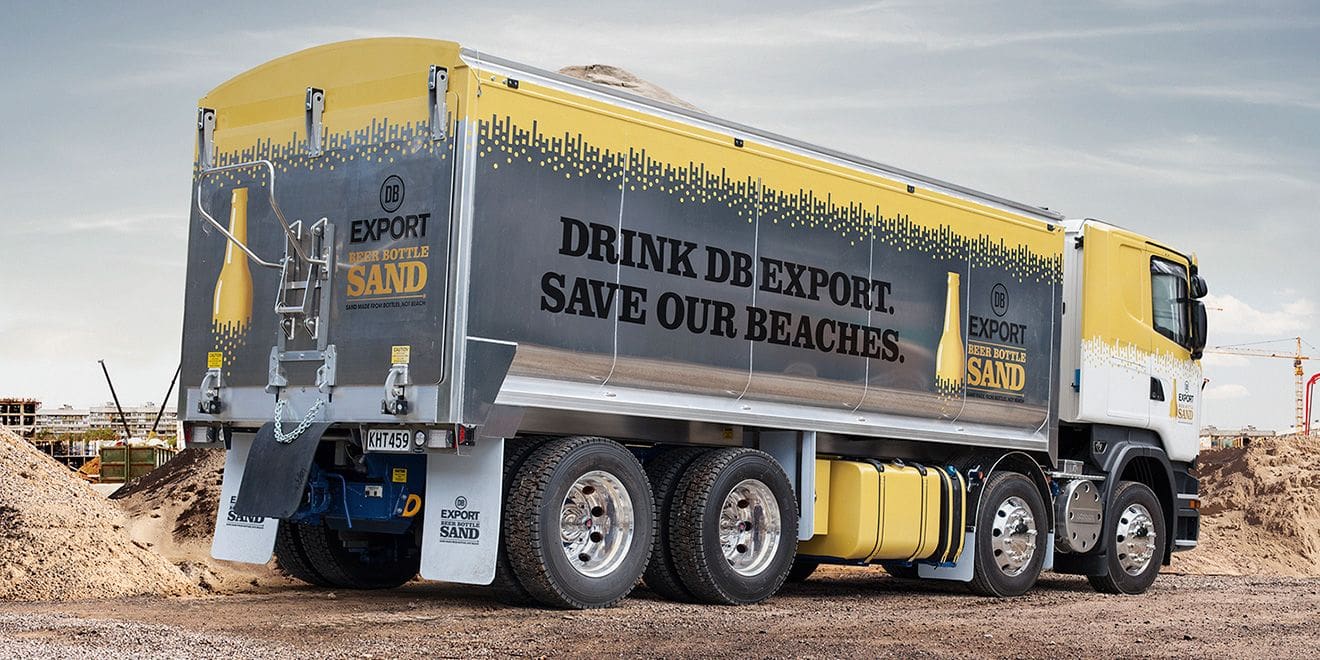Why Big Business Needs To Lead Sustainable Change
The following is the transcript of an interview by M2 Editor, Andre Rowell with Sam Forrest at the M2 Summit, 20 November 2019.
Sam is the Marketing Manager for DB Export and has worked with multiple FMCG brands in Marketing and Sales. Over the past two years, Sam has found his passion in applying creativity to circular economy thinking to the DB Export beer brand.
For more information on our Summits, visit M2summit.co.nz
Kiwi millennials these days want to work with purpose. They want to do things with meaning. One particular Kiwi millennial that really wants to make a difference is the Marketing Manager for DB Export, Sam Forrest, who decided that one of the best ways to do that was to work with the resources and the leverage of a bigger brand.
There might be some cynical people in the room, people that will mention the word greenwashing and suggest that this is all clever marketing to avoid the social ramifications of alcohol. What would you say to those cynical people?
I think the key thing there is you can’t bullshit people these days. You can’t greenwash people’s because consumers can see straight through it. Before you talk, you’ve got to walk the walk. It’s around having a really clear sustainability charter within your business that focuses on your own impact on the world.
Having clear pillars around what your impact is on the world and how can you take that on front on. It’s important as a business and organisation not to hide away from the elephants in the room and to address those up front. Some of our biggest challenges are around water usage; it’s 90% of total beer production. There are also challenges around our packaging and the impact we have on the world.
As you said, one of the biggest things is around creating a social and responsible drinking culture. With DB Export, we use our brand to talk about environmental sustainability and we talk about making the world a better place for beer drinkers.
We use our Heineken brand to bring to life our responsible consumption message. Ten percent of our media spend on Heineken every year goes towards promoting responsible consumption in New Zealand.
I think if you’ve got a really clear sustainability charter in your business and you’re actually walking the walk, then if you’ve got a great story to tell. It’s all around the art of storytelling, communicating that to people in a way that can have a positive impact on the world.
One of the reasons that led me to want to work with big brands to make a difference is that 85% of Americans said they have more faith in brands than politicians to make the change they want to see. Now, obviously they’ve got their own challenges with our friend Mr. Trump, but I thought it’s pretty similar to other parts of the world in terms of big brands.
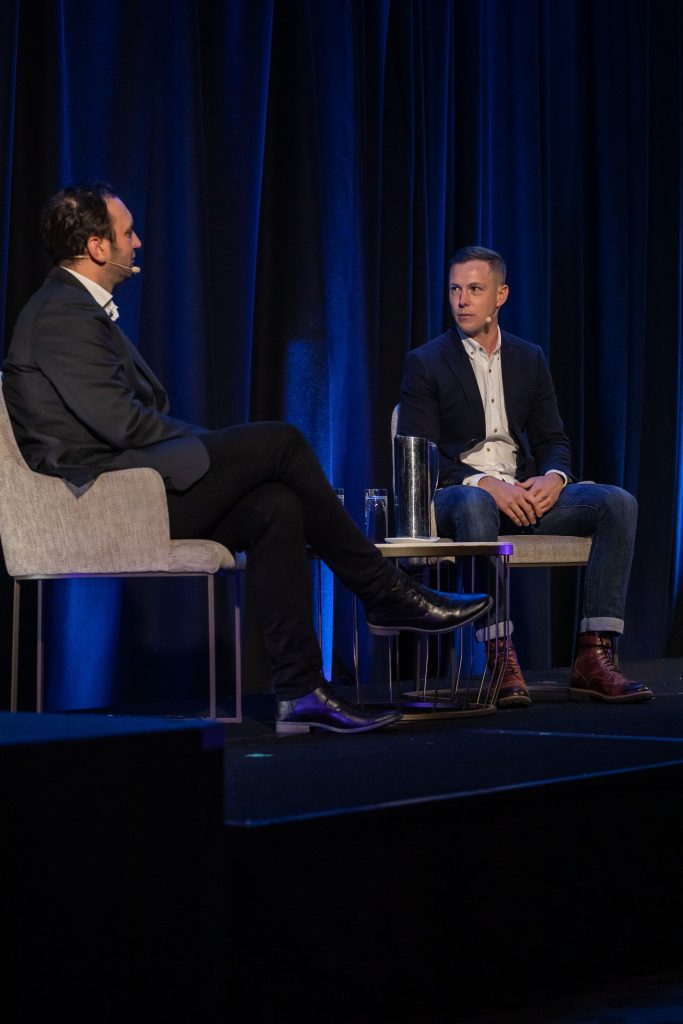
You have a real opportunity, but also a responsibility to try and do good for the world. The biggest way you can make the changes is actually through behaviour change and changing people’s consumption patterns. So how best to do that than with a brand that has massive reach.
We’ve done some pretty cool stuff to date. Brewtroleum was our first initiative and that was taking the leftover yeast slurry from brewing and distilling that into a high grade ethanol, which we then collaborated with Gull to mix it with their biofuel to make enough to last a couple of petrol stations around New Zealand for a couple of weeks.
That’s an ongoing initiative that we’ve done for the last four years. I think over four years of doing it, we’ve taken enough carbon out of the atmosphere for a car to drive around the world nine times. That’s pretty cool to say you’ve had that kind of impact.
Our second one was Beer Bottle Sand. We have a really high glass recycling rate in New Zealand and about 70% of glass in New Zealand actually makes it back to the furnace to be turned into more glass. Glass is an infinitely recyclable resource.
It’s a great packaging format, but a proportion of glass can’t be recycled and ends up going to landfill. We saw that as an opportunity for us to take a stewardship approach, being one of the big contributors to glass in New Zealand, and decided to take that glass and crush it into sand.
We then use that sand for whatever uses we can find. Sand is one of the most widely used resources in the world. We don’t feel the pinch of it here in New Zealand, but globally, there are sand wars going on in parts of India and around Asia because it is a finite resource.
We’ve done things like put it into construction; we’ve worked with Downer to use it for the Waikato Expressway. Next time you’re driving to Hamilton, you’re actually driving across beer bottles. We did a collaboration with Fuji Xerox where we took the left over toner cartridges and ink and mixed it with our beer bottle sand solution to make a tone of pavement that Downer used to repave Queenstown Airport.
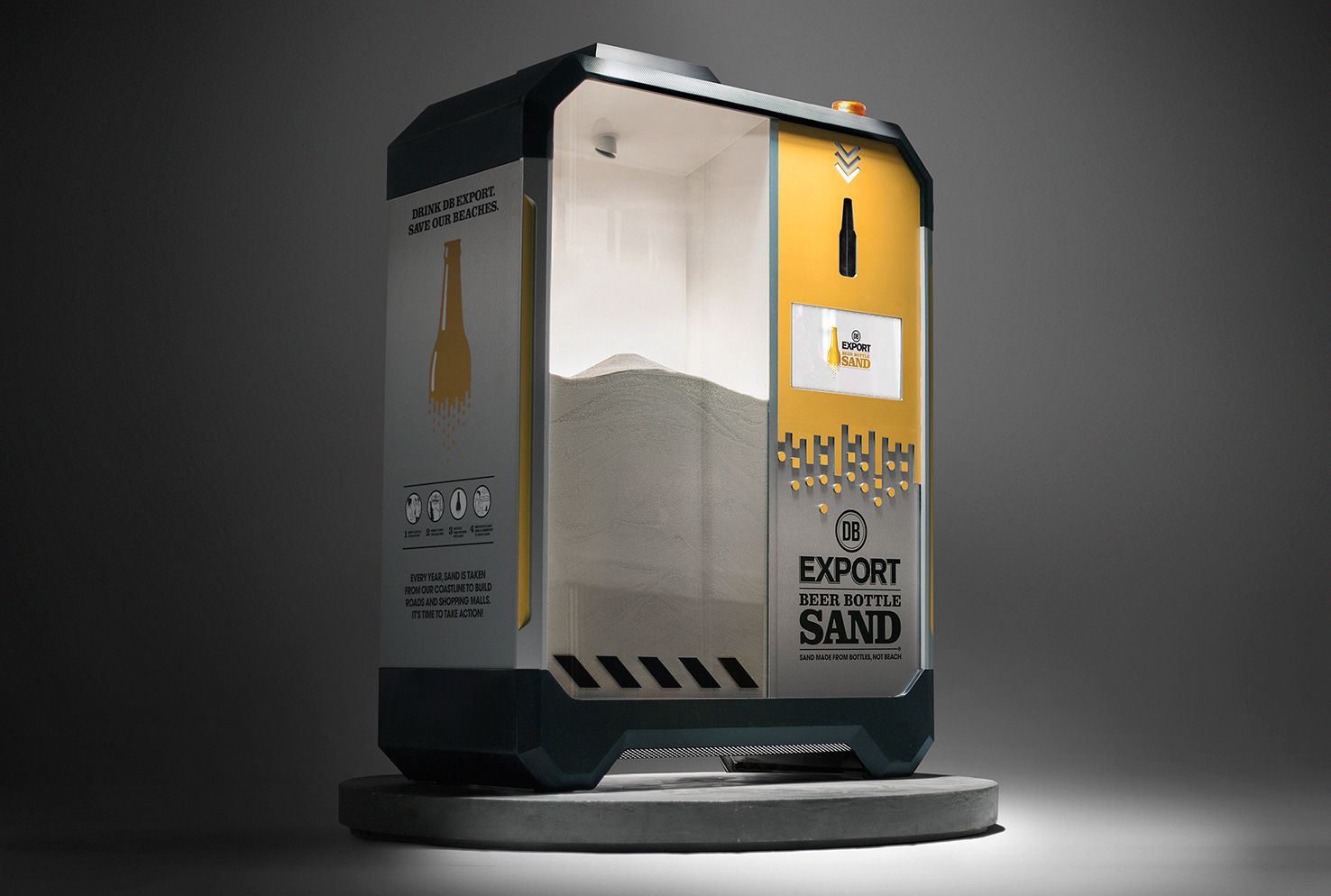
In terms of the ongoing impact, we have a relationship with Dry Mix Cement. They make lots of different cement products, but we make a ready-made eco-concrete that you can use for your DIY projects that was sold at Mitre10 Mega.
That’s one thing that we’re looking to scale up at the moment. We’re looking to put that across all of their trade products that you can get from hardware stores. We’ve still got a lot of sand to find a home for, so if anyone has a project that involves construction, sand or roading, we would be keen to hear from you.
In terms of ongoing sustainability, can you talk through the Brewtroleum side of things? Is it sustainable from a business perspective?
Like all innovation, some things are commercially viable and some aren’t. Brewtroleum is one that we’ve done for the last four years, but to create 10,000 litres of ethanol, it takes about 60,000 litres of yeast slurry. That is our whole year’s production of yeast slurry, and 10,000 litres of ethanol lasts only a couple of weeks.
For us to really have true impact with that initiative, I think we need to work and collaborate with lots of other industries and people to follow our lead and look at how they can turn their waste products into biofuel as well.
Is there a wider network going on? Do you get brands together over a table and work out what you can do together?
Yeah, definitely. You can’t save the world on your own. I think the biggest learning we’ve had is around collaboration to get scale. Whether it’s for expertise or funding, or whether they can give you scale in terms of projects. If you actually want to have a big impact, you need to collaborate with other people.
That’s why we love coming to these types of forums, to share what we’re up to and talk about it. You never know what connections you can make and opportunities there are. I think Beer Bottle Sand is one that is genuinely viable on a bigger scale because currently we’re finding a home for about 5,000 tons of sand, but there’s capacity to crush up to 10,000 tons of sand and that can be used for construction and the like.
Is there a bit of a strain at the moment? Are accountants at DB worrying about the money this is costing?
Traditionally, corporate social responsibility and profit were very separate. But I think consumer demand is so high now that not only is it the right thing to do, but doing good business is the future of business.
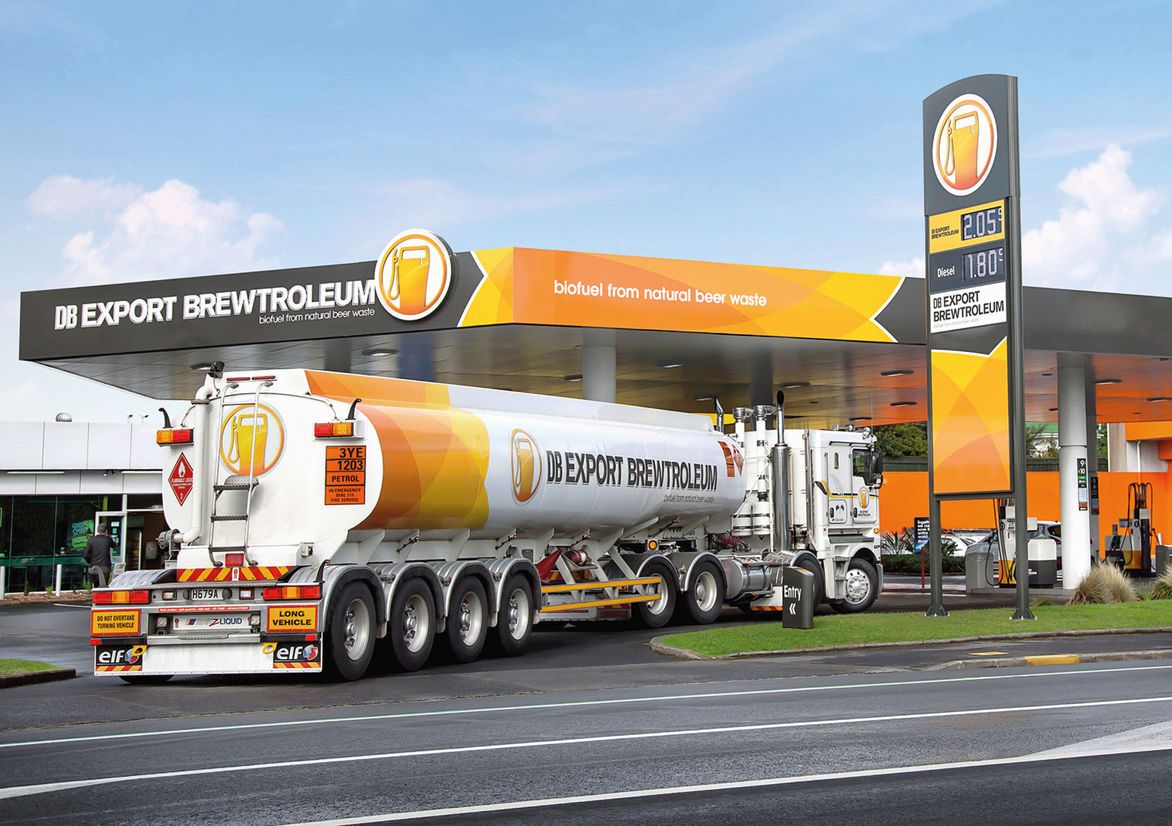
The key thing for me is being able to quantify the impact to get the senior people in the business to listen. I saw on the Colmar Brunton Better Futures report that 70% of consumers in New Zealand say they’re willing to pay more for brands with sustainable purpose.
You can start to quantify that. There’s a commercial upside from a top line point of view if you can communicate your sustainability story and it’s authentic and real.
Then, from a bottom line point of view, we’ve found a lot of savings in our business from actually being more sustainable across the entire business. A good example was we took all our shrink wrap off the pallets that were sending to our customers and replaced it with a better alternative and it actually saved us, I think it was half a million dollars in packaging costs. Looking for the right solutions can also be beneficial in terms of cost savings and opportunity.
Have you seen growth in market share? Have you seen increased sales because of what you’ve been doing over the last couple of years?
DB Export is a good example. Five years ago, it was a traditional mainstream beer. It was all about getting the party started. It was in double digit decline, it was redundant and it didn’t really have a clear purpose. We took a look at what it used to stand for. The business is all around innovation and the Morton Coutts story, he was a genuine Kiwi innovator.
We’ve always innovated to meet the needs of consumers, so how do we turn our attention to what’s actually effecting Kiwi beer consumers? Kiwis love a beer, but we also love enjoying that beer out in our backyard, which is our beer garden. How can we actually protect the unique Kiwi way of life that people enjoy drinking our products in?
We’re on a journey. We’ve taken the first couple of steps with these initiatives, but moving forward we want to bring it back to beer and what we’re doing and our impact on the world. I think once you’ve solved the problem of getting a house in order, then you have the luxury with your brands to look at how you can work with people around what happens when your products leave the door.
Moving forward, we’ve just signed a premier partnership with Keep New Zealand Beautiful. We’re looking to work with them to really understand our impact on the world and look at circular initiatives, but also empower communities that we’re a part of to now look after their own backyard.
They recently did a litter audit of the whole of New Zealand, looking at what the key waste streams were and where they were located. That’s going to really inform us where we can have the biggest impact as a business.
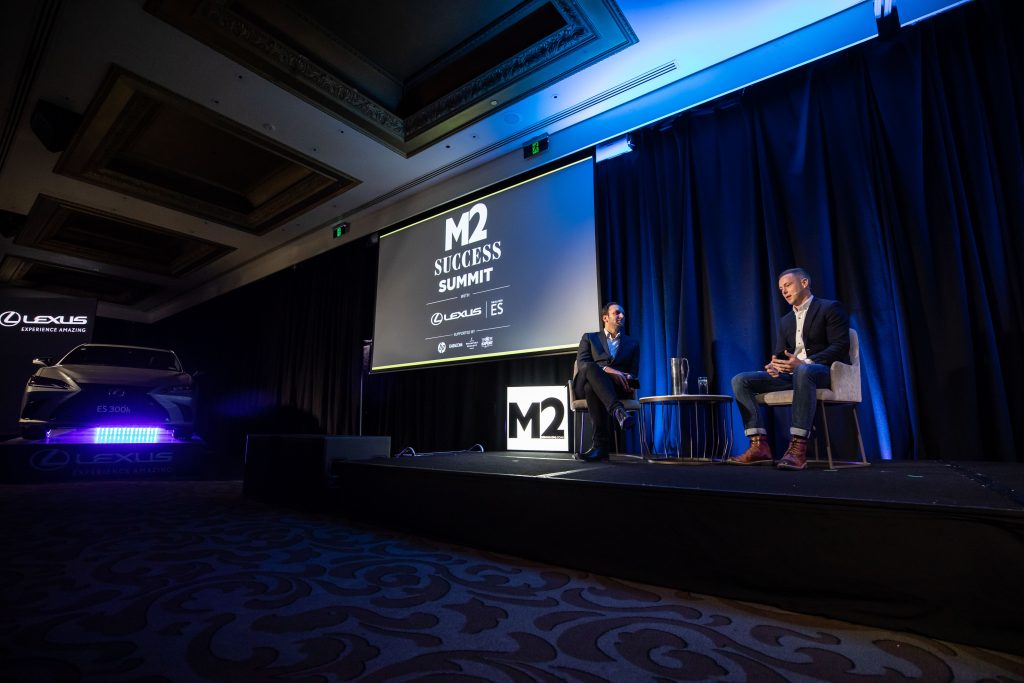
Are there some really pressing things that you’d like to look at next?
Our big focus next is around packaging and how we can be world leaders in sustainability for packaging within the beer industry. And then also continuing the circular economy.
It’s such a rich, fertile ground in terms of creativity. You can take what is traditionally seen as the waste stream and then turn it into a resource that has the ability to be used for something. We want to look at how we can use our waste streams to create more infrastructure to help our impact on the world.
Can you give any advice to other companies or organisations in terms of how they can shift the environmental dial in terms of their impact?
Look at what your impact is on the world in terms of what effects, whether it’s positive and negative, you have on the world. And then, what are the ecosystems that surround your impact? And then, how can you interject yourself into that system to have large impact? Look at your impact, look at the ecosystem and where can you interject yourself to make a difference.
For example, with recycling; there’s already great recycling infrastructure in New Zealand. We took a look at the system to find a problem that’s related to us that we can actually have some kind of impact. You can find quite often that making a small change can have quite a large impact if you tap into an existing system.
Focus on your impact. When it becomes greenwashing is when you start attaching yourself to organisations or things that aren’t relevant to what you actually do or your impact on the world. Make sure it’s authentic to what you’re doing.
There’s been a few discussions about the potential of New Zealand to be this innovation hub that seeds things globally. You’ve got that potential as well. Not only are you leveraging a big brand within New Zealand, but then you go further up the tree with Heineken globally. Are you seeing this stuff starting to go global as well?
Yeah, definitely. New Zealand is a great testing ground now. We’re a small country, very developed and it’s easy to test things here quickly. They look at us as an opportunity to test innovative ways to be more sustainable. I think there’s a big opportunity for us to leverage the scale of Heineken more moving forward and get some of our initiatives to have a greater impact globally.
Have you got any advice for attracting the best talent?
If you want to attract the top talent within the millennial group, which will be the biggest part of the workforce soon, have a clear purpose as a business around what you stand for. Look at what’s your value add to the world and then have a clear purpose that aligns to the values of your employees so you can actually get them behind it.
Another great stat I read was around 80% of millennials, aside from pay, the next thing they look for is working for a company with a clear purpose that are doing something beyond just selling a commodity in the world.

The environmental discussion has somehow become a generational thing as well. Do you do blame boomers for stealing your childhood?
[Laughs] No, I don’t. I think sustainability and creating a better world is everyone’s responsibility. It’s not one generations or the others. I think the worst thing you can do is create tension and make it negative.
There’s a lot of doom and gloom out there. If you can keep it positive and proactive and make it broadly relevant to a lot of people, that’s where we have the biggest opportunity to make change.
We try and tap into that satirical humor that’s part of Kiwi culture. Humor as a great way to connect emotionally with people. You can use humor and be funny around the idea of drinking a beer and saving the world. The undertone is you are actually trying to solve quite a big problem and you’re genuinely doing things that are having an impact.
What is the best advice you’ve been given?
I was very lucky recently to attend the Nudge Global Impact Challenge. It’s an eight month development program for young professionals from around the world who want to make a sustainable impact in their country.
The keynote speaker at the conference in Amsterdam was a guy called Jack Sim, he started the World Toilet Organization. His speech was all around collaboration being mutual exploitation. He’s like, ‘if you’re going to collaborate with people, they need to be getting something out of it, and so do you.’ It was quite poignant, but I found it really empowering.
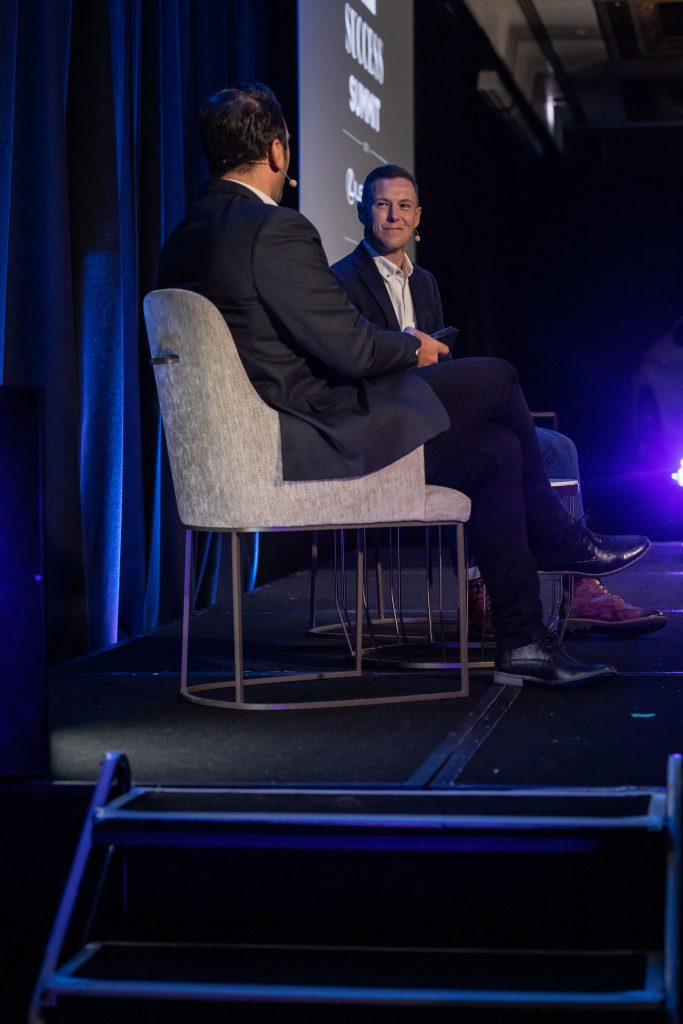
The example he gave is that 45% of the world’s population doesn’t have access to adequate sanitation. So lots of people around the world are going to the toilet on the side of the road. He wanted to put more toilets around the world to make a difference. He had a goal of putting a billion toilets in around the world in 10 years.
He created the World Toilet Organisation and the World Toilet Summit and every year he offers it up to a different country to host. Politicians take it and want to host it because it’s a good look for them. Celebrities want to be involved because it looks good for their image. NGOs want to be involved because they can fundraise for money at the summit. At the end of the day, people get toilets.
He said, if you actually want to achieve your goal, then you need to be giving people a forum or something they want in return along the way to achieve your goal. That’s probably the best advice I’d taken out of that.
For more information on our Summits, visit M2Success.co.nz

